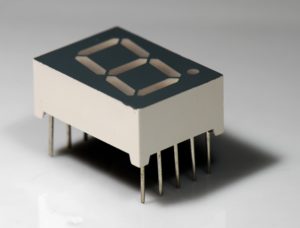LED technology has undoubtedly changed our environment, or at least the way we light it, but what is behind the history of LEDs? Let’s discover the origins of the technology that has revolutionized the lighting market.
Discovery of the LED
Electroluminescence, a phenomenon we have discussed before, is not new. It was first observed by Captain Henry Joseph Round (1881-1966), a military officer, engineer and personal assistant to Guillermo Marconi, while working with silicon carbide crystals in 1907. Twenty years later, the creation of the first LED by the Russian inventor Oleg Losev became known, news that spread through various specialized Soviet, German and English media, but which at the time seemed to lack any practical application.
In its beginnings, LED was not found to be of any practical use.
After several discoveries and studies with various types of semiconductors such as infrared emissions, creation of simple optical communication links, photoreceptors, etc., we arrived in 1962 when the scientist Nick Holonyak developed the first LED that radiated within the visible spectrum with red light. The next decade saw the invention of the yellow LED and a tenfold increase in the brightness of red LEDs. As early as 1976, the first LEDs specially designed for fiber optic telecommunications were developed.
First commercial applications in the history of LEDs
The first LEDs were used as operation indicator lights, such as the standby LED in televisions, or in the seven-segment displays that are also very common. Like any new product the initial production costs were prohibitive, but gradually large-scale manufacturing methods were perfected that made these early LEDs an increasingly affordable product.

The advent of the blue LED
Fast forward a little further in the history of the LED and we are back in 1994 when the first high brightness blue LED was presented by Shuji Nakamura which, in combination with work developed by two of his compatriots, Isamu Akasaki and Hiroshi Amano, earned them the Nobel Prize in physics in 2014.

The white LED and the breakthrough in the lighting market.
Shortly after high-efficiency blue LEDs were developed, the first white LEDs were introduced. These used a phosphorescent material that absorbed part of the blue light and produced yellow light. This combination of yellow and blue, which are complementary colors, is white to the human eye. In turn, by using materials of different properties, green and red light can be achieved by fluorescence. The combination of red, green and blue light is not only perceived as white by the eye, but also allows colors to be reproduced with much higher quality than “blue-yellow” light, whose wavelengths do not represent greens and reds correctly.
Although in the beginning the light they emitted was not very bright, the luminosity of LEDs has been growing exponentially thanks also to the development of semiconductors and advances in optical systems. In fact, rates of over 300 lm/W are being achieved experimentally.
As we have seen in this brief review of the history of LEDs, this technology has gone from being something that did not seem to have any practical application to being the most efficient and ecological option for illuminating our surroundings. In fact, there are several types of LEDs with endless applications.

